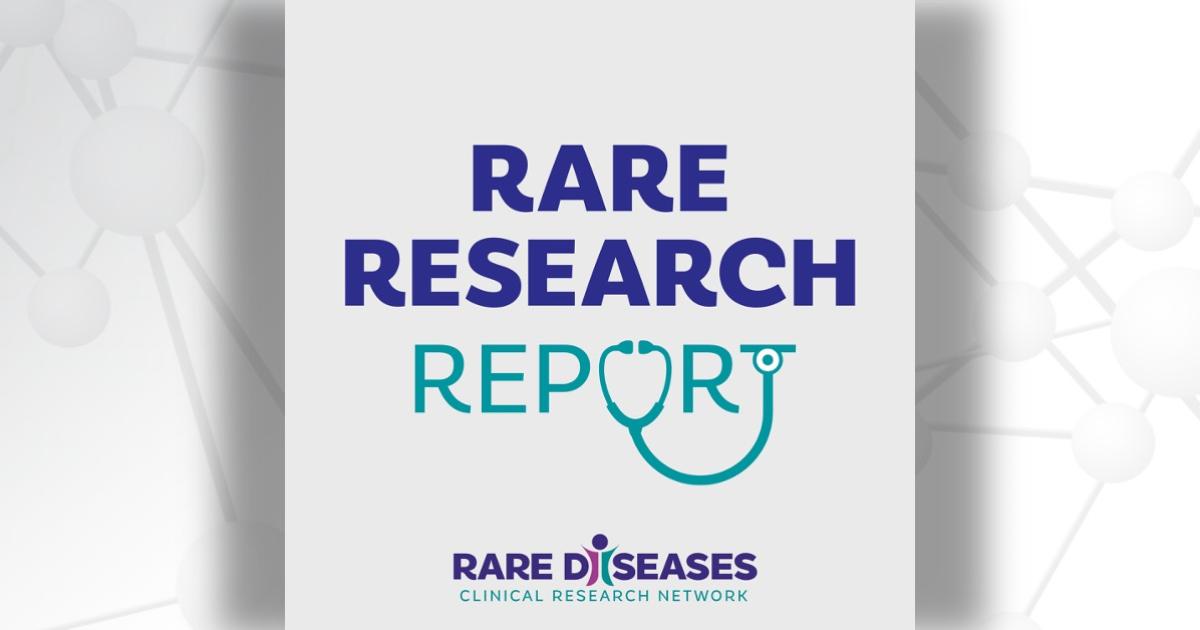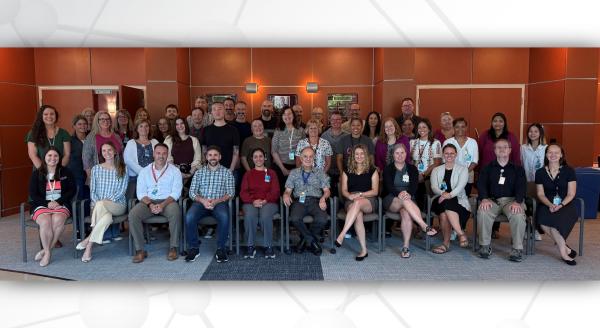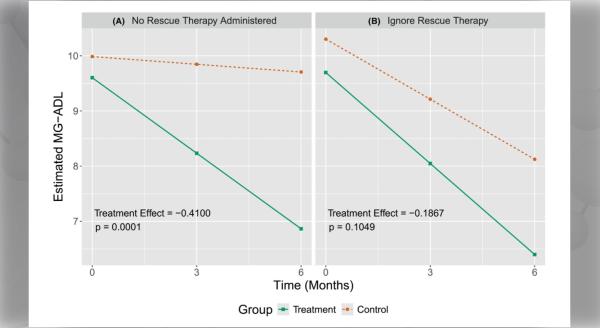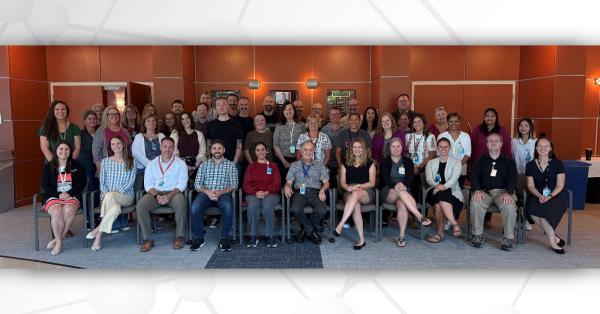Each month, we share summaries of recent Rare Diseases Clinical Research Network (RDCRN) grant-funded publications. Catch up on the latest RDCRN research below.
Jump to:
- Brittle Bone Disorders Consortium (BBDC)
- Frontiers in Congenital Disorders of Glycosylation Consortium (FCDGC)
- Genetic Disorders of Mucociliary Clearance Consortium (GDMCC)
- Inherited Neuropathy Consortium (INC)
Listen to these summaries on the Rare Research Report podcast.
Brittle Bone Disorders Consortium (BBDC)
Osteogenesis imperfecta (OI) is a group of inherited connective tissue disorders associated with a wide range of symptoms, including fragile bones that break easily. Although progress has been made in understanding the spectrum of physical symptoms, less is known about the impact of OI on psychosocial well-being, as well as factors that can help lessen negative outcomes.
In this study, researchers developed a qualitative approach to assess perspectives from individuals with OI on psychosocial burdens and positive factors related to OI. Among 15 adults with varying disease status, the team conducted semi-structured interviews and identified themes from responses.
Participants reported negative psychosocial outcomes related to bone fractures and recovery, uncertainty of future fractures, and self-image. Participants also described positive traits related to OI and their lived experience with a chronic disease. Authors note that these insights highlight a need for continued research on the relationship between OI disease status and psychosocial outcomes, as well as the development of psychological interventions designed for individuals with OI.
Rork WC, Hertz AG, Wiese AD, Kostick KM, Nguyen D, Schneider SC, Shepherd WS, Cho H; Members of the BBDC; Murali CN, Lee B, Sutton VR, Storch EA. A qualitative exploration of patient perspectives on psychosocial burdens and positive factors in adults with osteogenesis imperfecta. Am J Med Genet A. 2023 Sep;191(9):2267-2275. doi: 10.1002/ajmg.a.63323. Epub 2023 Jun 15. PMID: 37317786.
Frontiers in Congenital Disorders of Glycosylation Consortium (FCDGC)
Evaluating Mitochondrial Function and Autophagy in PMM2-Congenital Disorder of Glycosylation
PMM2-CDG is a type of congenital disorder of glycosylation caused by mutations in the PMM2 gene. Some types of CDG are associated with dysfunction of the mitochondria, which generate energy to power cells. However, not much is known about cellular bioenergetics (how cells transform energy) in PMM2-CDG.
In this study, researchers evaluated mitochondrial function and autophagy (the process of breaking down cellular contents) in PMM2-CDG. The team evaluated fibroblasts (skin cell-derived connective tissue cells) with different genotypes from a natural history study of individuals with PMM2-CDG.
Results reveal secondary mitochondrial dysfunction in PMM2-CDG, as well as altered autophagy, which may act as a marker of disease severity. Authors note that manipulating these processes could offer therapeutic benefits when combined with existing treatments for PMM2-CDG.
Ligezka AN, Budhraja R, Nishiyama Y, Fiesel FC, Preston G, Edmondson A, Ranatunga W, Van Hove JLK, Watzlawik JO, Springer W, Pandey A, Morava E, Kozicz T. Interplay of Impaired Cellular Bioenergetics and Autophagy in PMM2-CDG. Genes (Basel). 2023 Aug 4;14(8):1585. doi: 10.3390/genes14081585. PMID: 37628636; PMCID: PMC10454768.
Studying Variants of CAD Deficiency to Improve Diagnosis
CAD deficiency is a rare congenital disorder of glycosylation characterized by epileptic encephalopathy (disease affecting the brain). Because symptoms are non-specific, there is no biomarker, and the CAD protein has over 1,000 known variants, CAD deficiency is difficult to diagnose.
In this study, researchers aimed to improve diagnosis of CAD deficiency. The team assessed the disease-causing ability of both previously reported and unreported CAD variants. Additionally, researchers studied the impact of disease-causing variants at the protein level.
Authors note that combining these functional and protein structural analysis methods can help refine clinical diagnostic workflow for CAD variants.
Del Caño-Ochoa F, Ng BG, Rubio-Del-Campo A, Mahajan S, Wilson MP, Vilar M, Rymen D, Sánchez-Pintos P, Kenny J, Martos ML, Campos T, Wortmann SB, Freeze HH, Ramón-Maiques S. Beyond genetics: Deciphering the impact of missense variants in CAD deficiency. J Inherit Metab Dis. 2023 Aug 4. doi: 10.1002/jimd.12667. Epub ahead of print. PMID: 37540500.
Genetic Disorders of Mucociliary Clearance Consortium (GDMCC)
Updating Diagnostic Criteria and Considerations for Primary Ciliary Dyskinesia
Primary ciliary dyskinesia (PCD) is an inherited condition in which mucociliary clearance of the lungs is impaired. Symptoms include chronic sinusitis, frequent respiratory and middle ear infections, hearing loss, chronic cough, severe lung damage, and bronchiectasis (irreversible scarring and dilation of the bronchi).
Individuals with PCD often receive a delayed diagnosis due to multiple factors, including the commonality of symptoms, variability of severity, number of clinicians involved in their care, limitations of diagnostic tests, and lack of standards. Both diagnosed and undiagnosed individuals with PCD require frequent care of the ear, nose, and throat (ENT). However, there is limited published guidance for the proper diagnosis of PCD.
This clinical letter for ENT clinicians educates ENTs about modern diagnostic criteria and considerations through two cases: a new diagnosis in an adult and a misdiagnosis of PCD as a child that was carried into adulthood.
Chaskes MB, Lopez EM, Kong KA, Ebert CS Jr, Senior BA, Thorp BD, Kimple AJ. Primary ciliary dyskinesia: An update on contemporary diagnosis. Int Forum Allergy Rhinol. 2023 Aug 11. doi: 10.1002/alr.23254. Epub ahead of print. PMID: 37565263.
Inherited Neuropathy Consortium (INC)
Charcot-Marie-Tooth disease (CMT) is a group of disorders that affect the peripheral nerves, which connect the brain and spinal cord to muscles and sensory cells. Symptoms include weakness, sensory loss, muscle atrophy (wasting), and foot deformities.
In this study, researchers evaluated the impact of body mass index (BMI) on disease progression over two years in children with CMT. Among 242 participants aged 3–20 years with CMT, the team categorized groups by BMI and assessed disease severity using the CMT Pediatric Scale (CMTPedS).
Results show that children with CMT who were severely underweight, underweight, or obese exhibited greater disability at baseline. Over the two-year period in those whose BMI remained stable, severely underweight children deteriorated at the fastest rate. For children who changed BMI categories over the two years, CMTPedS scores deteriorated faster in those who became overweight or obese. Authors note that interventions to maintain or improve BMI toward healthy weight may reduce disability in children with CMT.
Donlevy GA, Cornett KMD, Garnett SP, Shy R, Estilow T, Yum SW, Anderson K, Pareyson D, Moroni I, Muntoni F, Reilly MM, Finkel RS, Herrmann DN, Eichinger KJ, Shy ME, Burns J, Menezes MP. Association of Body Mass Index With Disease Progression in Children With Charcot-Marie-Tooth Disease. Neurology. 2023 Aug 15;101(7):e717-e727. doi: 10.1212/WNL.0000000000207488. Epub 2023 Jun 28. PMID: 37380432; PMCID: PMC10437011.
Exploring the Natural History of Charcot-Marie-Tooth Disease Type 4C
Charcot-Marie-Tooth disease type 4C (CMT4C) is an inherited, degenerative disorder affecting the nerves that travel to the feet and hands. CMT4C is caused by recessive variants in the SH3TC2 gene and characterized by early onset spinal deformities, as well as a wide spectrum of symptoms and severity. Currently, not much is known about the relationship between pathogenic (disease-causing) variants and disease manifestations.
In this study, researchers explored the natural history of CMT4C by gathering genetic and clinical data from the Inherited Neuropathy Consortium (INC). The team examined symptoms, neurological examinations, and neurophysiological characteristics over time in 56 individuals with CMT4C.
The resulting analysis marks the largest cross-sectional and only longitudinal study to date of the clinical phenotype of both adults and children with CMT4C. Authors note that by further defining the natural history of CMT4C, these data will help inform study design of future clinical trials for genetic treatments.
Rehbein T, Wu TT, Treidler S, Pareyson D, Lewis R, Yum SW, McCray BA, Ramchandren S, Burns J, Li J, Finkel RS, Scherer SS, Zuchner S, Shy ME, Reilly MM, Herrmann DN. Neuropathy due to bi-allelic SH3TC2 variants: genotype-phenotype correlation and natural history. Brain. 2023 Sep 1;146(9):3826-3835. doi: 10.1093/brain/awad095. PMID: 36947133; PMCID: PMC10473553.
The Rare Diseases Clinical Research Network (RDCRN) is funded by the National Institutes of Health (NIH) and led by the National Center for Advancing Translational Sciences (NCATS) through its Division of Rare Diseases Research Innovation (DRDRI). Now in its fourth five-year funding cycle, RDCRN is a partnership with funding and programmatic support provided by Institutes, Centers, and Offices across NIH, including the National Institute of Neurological Disorders and Stroke, the National Institute of Allergy and Infectious Diseases, the National Institute of Diabetes and Digestive and Kidney Diseases, the Eunice Kennedy Shriver National Institute of Child Health and Human Development, the National Institute of Arthritis and Musculoskeletal and Skin Diseases, the National Heart, Lung, and Blood Institute, the National Institute of Dental and Craniofacial Research, the National Institute of Mental Health, and the Office of Dietary Supplements.






